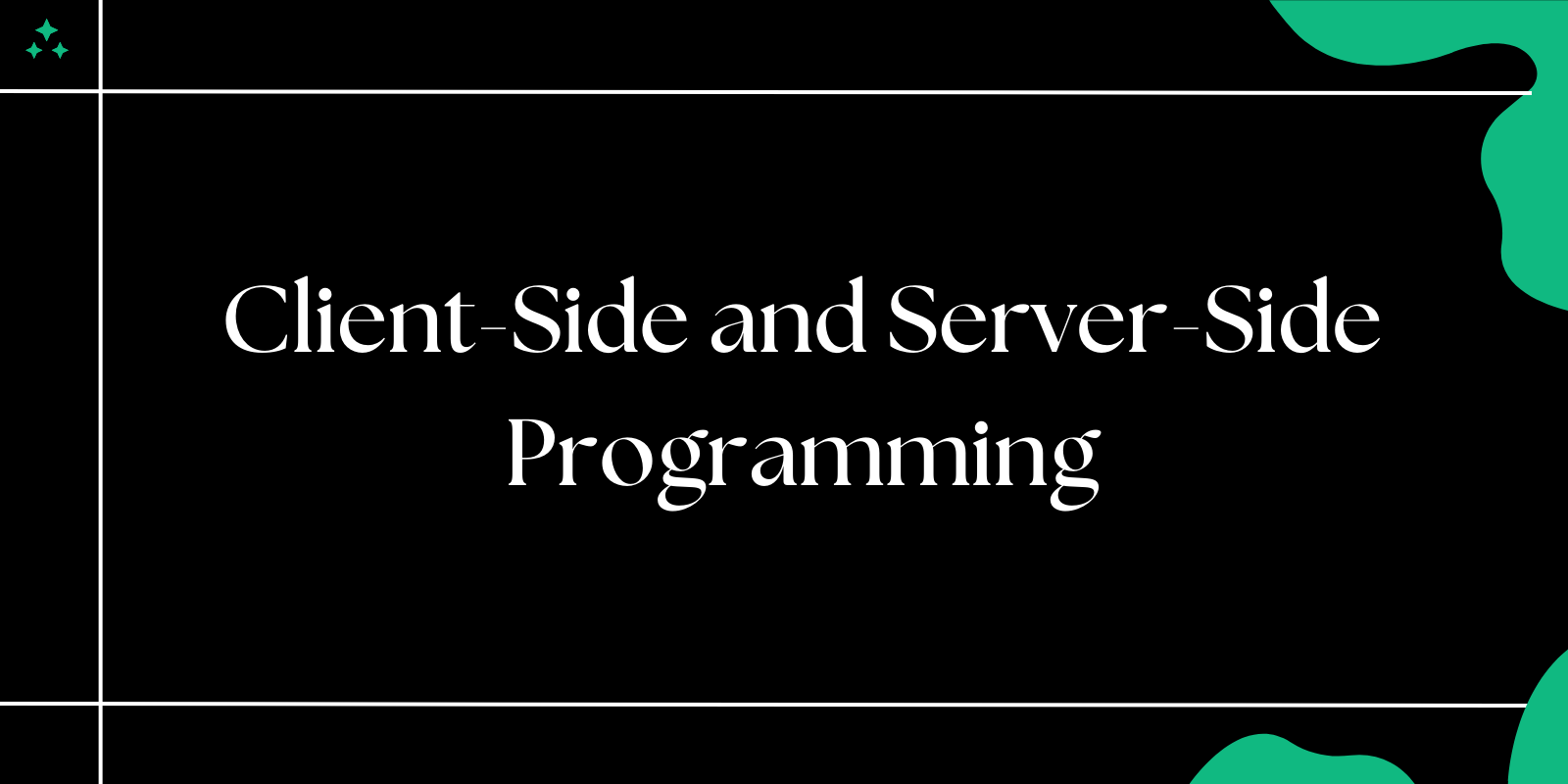Introduction
Web development is divided into two major categories: client-side and server-side programming. These terms describe where the code runs and its purpose in delivering a seamless user experience. In this article, we will explore the differences between client-side and server-side programming with examples.
What is Client-Side Programming?
Client-side programming refers to code executed on the user's device (browser). It manages the presentation layer of a web application, focusing on interactivity, design, and user experience.
Key Characteristics:
- Runs on the browser.
- Handles UI/UX interactions.
- Limited access to server resources.
- Examples: HTML, CSS, JavaScript, and frameworks like React or Angular.
Example: Form Validation (Client-Side)
<!DOCTYPE html>
<html lang="en">
<head>
<title>Client-Side Validation</title>
<script>
function validateForm() {
const name = document.getElementById("name").value;
if (name === "") {
alert("Name cannot be empty!");
return false;
}
return true;
}
</script>
</head>
<body>
<form onsubmit="return validateForm()">
<label for="name">Name:</label>
<input type="text" id="name" name="name">
<button type="submit">Submit</button>
</form>
</body>
</html>
Benefits of Client-Side Programming:
- Improves performance by reducing server load.
- Provides immediate feedback to users.
- Enhances interactivity.
What is Server-Side Programming?
Server-side programming refers to code executed on the web server. It processes user requests, interacts with the database, and generates dynamic content to send to the client.
Key Characteristics:
- Runs on the web server.
- Handles business logic and database operations.
- Provides secure data management.
- Examples: PHP, Python, Node.js, Ruby, and Java.
Example: Form Handling (Server-Side)
HTML Form (Client-Side)
<!DOCTYPE html>
<html lang="en">
<head>
<title>Form Submission</title>
</head>
<body>
<form action="process.php" method="post">
<label for="name">Name:</label>
<input type="text" id="name" name="name">
<button type="submit">Submit</button>
</form>
</body>
</html>
PHP Script (Server-Side)
<?php
if ($_SERVER["REQUEST_METHOD"] === "POST") {
$name = htmlspecialchars($_POST['name']);
echo "Hello, " . $name . "! Welcome to our website.";
}
?>
Benefits of Server-Side Programming:
- Secure data processing and storage.
- Dynamic content generation.
- Centralized logic for easier maintenance.
Client-Side vs. Server-Side: Key Differences
| Feature | Client-Side | Server-Side |
|---|---|---|
| Execution Environment | Browser | Web Server |
| Role | UI/UX and interactivity | Business logic and database operations |
| Examples | HTML, CSS, JavaScript | PHP, Python, Node.js |
| Access to Server Resources | Limited | Full Access |
| Performance | Fast, reduces server load | Depends on server capability |
How They Work Together
- Client-Side Request: The user interacts with a web page. For example, clicking a button or submitting a form.
- Server-Side Processing: The server processes the request, performs actions (like database queries), and returns a response.
- Client-Side Rendering: The browser renders the response, displaying the updated content.
Full Workflow Example
HTML Form
<form id="userForm" method="POST">
<label for="name">Enter Your Name:</label>
<input type="text" id="name" name="name">
<button type="button" onclick="submitForm()">Submit</button>
</form>
<div id="response"></div>
JavaScript (Client-Side)
function submitForm() {
const name = document.getElementById("name").value;
fetch("/process", {
method: "POST",
headers: { "Content-Type": "application/json" },
body: JSON.stringify({ name })
})
.then(response => response.json())
.then(data => {
document.getElementById("response").innerText = data.message;
})
.catch(error => console.error("Error:", error));
}
Node.js (Server-Side)
const express = require("express");
const app = express();
app.use(express.json());
app.post("/process", (req, res) => {
const { name } = req.body;
res.json({ message: `Hello, ${name}! Welcome to our website.` });
});
app.listen(3000, () => console.log("Server running on http://localhost:3000"));
Conclusion
Client-side and server-side programming work in tandem to build robust web applications. While the client-side handles user interactions, the server-side ensures secure and efficient data processing. Understanding these differences is key to becoming a well-rounded web developer.
Happy coding! 🚀



